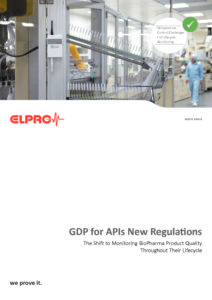The Shift to Monitoring BioPharma Product Quality Throughout Their Lifecycle
For years, pharmaceutical manufacturers have talked about the last mile. With mail order pharmacies, direct to pharmacy/patient channels, and things like orphan drug clinical trials, the last mile can be complex yet largely unregulated.
The other end of the pharmaceutical supply chain, the inbound supply of ingredients, has received more solid guidance from regulators. In 2000, major markets including the EU and US supported the ICH Q7 initiative by publishing their own guidelines specifically for GMP for APIs. Although GMP guides have included some elements on storage and distribution, the only GDP focused guide was the WHO Guide on GTDP for Pharmaceutical Starting Materials until recently.
From the pharmaceutical manufacturer’s point of view, they need data to show quality control through the entire product’s lifecycle to prove their products are safe to be consumed by customers and patients. With a large percentage of medicines requiring temperature control, that evidence is often temperature data. However, pharmaceutical supply chains are not simply from point A to B anymore. In the globalized world of pharmaceutical supply chains, medicines touch many hands, airports, depots, trucks, and pharmacies before reaching the patient.
The Stability Budget helps pharmaceutical manufacturers combine temperature data across all hands and legs of a supply chain. This provides evidence that the sensitive product has been safeguarded along the entire supply chain. Therefore, the patient knows they are using a safe product. To create and manage stability budgets, it’s imperative to use a central database/platform for all temperature, product and shipment data.
Read more on the temperature control challenges, regulatory expectations and Stability Budget solution outlined in this whitepaper by ELPRO.

%20(1).png?width=773&height=112&name=Generis%20Logo%20full%20Colour%20(Large)%20(1).png)


-Nov-13-2025-01-18-02-9699-PM.png)
-2.png)